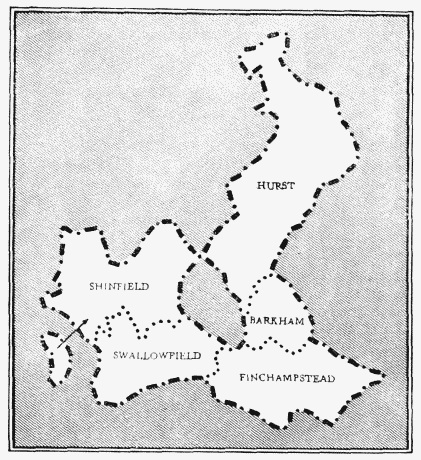A History of the County of Berkshire: Volume 3. Originally published by Victoria County History, London, 1923.
This free content was digitised by double rekeying. All rights reserved.
'The hundred of Charlton: Introduction and map', in A History of the County of Berkshire: Volume 3, ed. P H Ditchfield, William Page (London, 1923), British History Online https://prod.british-history.ac.uk/vch/berks/vol3/p237 [accessed 31 January 2025].
'The hundred of Charlton: Introduction and map', in A History of the County of Berkshire: Volume 3. Edited by P H Ditchfield, William Page (London, 1923), British History Online, accessed January 31, 2025, https://prod.british-history.ac.uk/vch/berks/vol3/p237.
"The hundred of Charlton: Introduction and map". A History of the County of Berkshire: Volume 3. Ed. P H Ditchfield, William Page (London, 1923), British History Online. Web. 31 January 2025. https://prod.british-history.ac.uk/vch/berks/vol3/p237.
THE HUNDRED OF CHARLTON
CONTAINING THE PARISHES OF
The above list with the tithing of Earley in Sonning (fn. 1) represents the extent of the hundred in 1831. (fn. 2) Since that date there has been a readjustment by the addition of the liberty of Broad Hinton in Hurst, which was annexed to Berkshire in 1844, having previously, although situated geographically in the hundred of Charlton, belonged legally to the county of Wilts. Portions of Swallowfield and Shinfield, also in the county of Wilts., were added to Charlton at the same time. (fn. 3) All the above-mentioned townships except Broad Hinton are given in the Domesday Survey of the hundred, and at that date Remenham, Sonning (which then included all the parishes in the present hundred of Sonning) and Wargrave were also included. The whole was then assessed at 44 hides, which was less than a third of the pre-Conquest assessment. (fn. 4)

Index Map to the Hundred of Charlton
Before 1224 Sonning had been withdrawn by the Bishops of Salisbury and formed into a hundred, and Wargrave had also been separated from Charlton, (fn. 5) whilst Remenham was added to Beynhurst before 1286. (fn. 6) From that time until 1844 the extent of the hundred remained unaltered. (fn. 7)
The hundred of Charlton was one of the seven hundreds of Windsor Forest. It remained in the hands of the king. (fn. 8) and its jurisdiction was probably eventually merged in that of the court of the Seven Hundreds of Cookham and Bray. (fn. 9)
